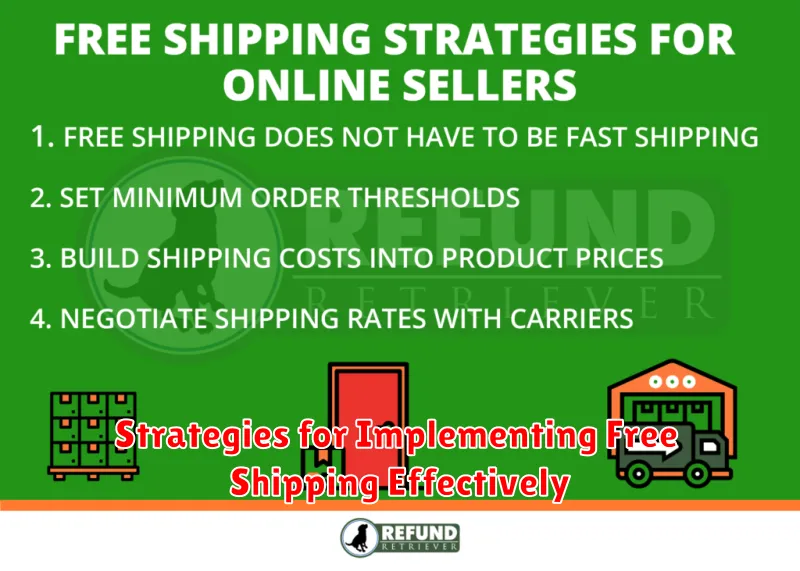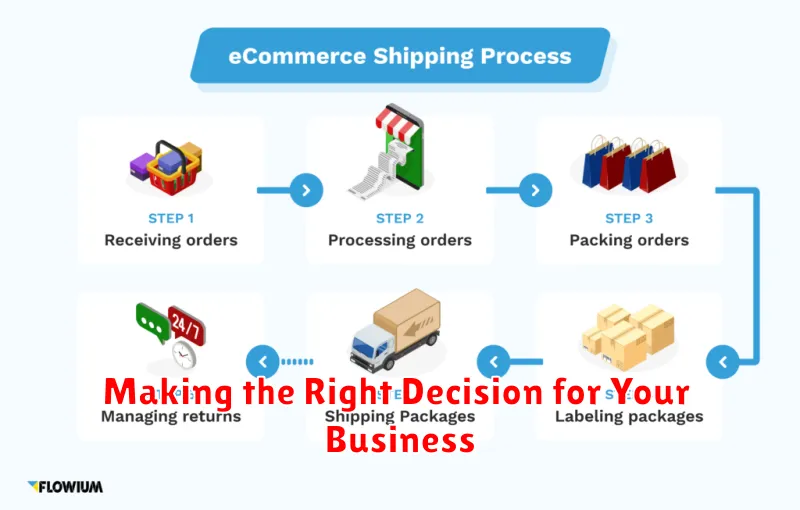Free shipping has become a significant factor influencing online shopping behavior, making it a crucial element of any e-commerce strategy. Many online retailers offer free shipping as an incentive to attract customers, increase sales, and compete in the ever-growing online marketplace. While seemingly beneficial for consumers, incorporating free shipping into your e-commerce strategy requires careful consideration of the potential benefits and drawbacks to your business. This article will explore the complexities of free shipping, weighing the pros and cons to help you determine the best approach for your e-commerce business.
Implementing a successful free shipping offer requires a comprehensive understanding of its implications. This includes analyzing the impact on profit margins, considering different free shipping thresholds and strategies, and understanding how free shipping affects customer perception and buying behavior. By carefully analyzing the pros and cons presented in this article, you can develop a robust and effective free shipping strategy that aligns with your overall e-commerce goals and maximizes your business’s potential for success.
Understanding the Allure of Free Shipping
Free shipping has become a major incentive for online shoppers, often influencing purchasing decisions significantly. The allure lies in the perceived value and simplicity it offers.
Customers appreciate the transparency of an all-inclusive price. Seeing the final cost upfront, without additional charges tacked on at checkout, makes budgeting easier and the purchase feels less complex. This transparency can build trust and encourage larger orders, as customers are not deterred by unexpected shipping fees.
Furthermore, free shipping promotions often create a sense of urgency and excitement, particularly when combined with minimum purchase requirements. This can drive sales and reduce cart abandonment rates.
Ultimately, the perception of “getting something for free” is a powerful psychological driver. While the cost of shipping is often factored into the product price, presenting it as free enhances the perceived value of the deal, making customers feel like they are receiving a bonus.
The Benefits of Offering Free Shipping
Free shipping can be a powerful incentive for online shoppers, offering several key advantages for e-commerce businesses. A primary benefit is the increased conversion rate. By eliminating shipping costs, customers are more likely to complete their purchase, reducing cart abandonment.
Higher average order value is another potential upside. Customers may add more items to their cart to reach a free shipping threshold, boosting overall sales. Free shipping also promotes a positive brand perception. Customers view it as a valuable perk, fostering loyalty and encouraging repeat business.
Finally, free shipping can provide a competitive edge, particularly in saturated markets. It can differentiate a business from competitors who still charge for shipping, attracting more price-sensitive customers.
The Potential Downsides of Free Shipping
While free shipping can be a powerful tool, it’s crucial to acknowledge the potential drawbacks. One major concern is the impact on profit margins. Absorbing shipping costs can significantly reduce profitability, especially for businesses with lower average order values or bulky, heavy items.
Increased handling and logistical complexities can also arise. Offering free shipping often leads to a higher volume of orders, which can strain existing fulfillment processes and necessitate investments in additional warehouse space, staff, or technology.
Another potential downside is the expectation of free shipping becoming the norm, making it difficult to revert to charging for shipping in the future without potentially losing customers. This can create a competitive disadvantage, particularly for smaller businesses that may not have the same economies of scale as larger competitors.
Calculating the True Cost of Free Shipping
Offering free shipping isn’t actually “free” for your business. Accurately calculating the true cost is crucial for maintaining profitability. Several factors contribute to this cost, and neglecting them can significantly impact your margins.
Shipping Fees: This is the most obvious cost, encompassing what carriers charge you to transport packages. Consider factors like weight, dimensions, destination, and shipping speed.
Packaging Costs: Boxes, envelopes, tape, and other packing materials all add up. These seemingly small expenses accumulate quickly, especially with high order volumes.
Handling Costs: This includes labor for picking, packing, and preparing orders for shipment. Factor in employee wages, and the time spent on these tasks.
Customer Service Costs: Free shipping can sometimes lead to increased customer service inquiries regarding order status and delivery times. This adds to operational expenses.
Lost or Damaged Goods: The cost of replacing lost or damaged items shipped for free must be factored in. While insurance can mitigate some losses, it also represents an additional expense.
Strategies for Implementing Free Shipping Effectively

Offering free shipping strategically can maximize its benefits while mitigating potential drawbacks. Consider these approaches:
Conditional Free Shipping
Establish a minimum order value to qualify for free shipping. This encourages larger purchases and can offset shipping costs. Clearly communicate the threshold to customers.
Free Shipping on Specific Items
Offer free shipping on select products, perhaps those with higher profit margins or that need a sales boost. This targeted approach can be highly effective.
Membership or Loyalty Programs
Reward loyal customers with free shipping as a perk. This fosters repeat business and builds stronger customer relationships.
Free Shipping During Specific Periods
Offer free shipping during promotional events or holidays. This can drive sales during key periods and create a sense of urgency.
Transparent Shipping Costs
Even if not offering blanket free shipping, be upfront about shipping costs. Surprises at checkout can lead to abandoned carts. Provide clear and concise shipping information early in the customer journey.
Alternatives to Free Shipping
If free shipping isn’t feasible for your business model, several alternatives can still attract customers and boost sales. Consider offering conditional free shipping, where customers receive free shipping after reaching a minimum order value. This encourages larger purchases and can offset shipping costs.
Another option is a flat-rate shipping fee. This provides transparency and predictability for customers, simplifying their purchase decision. A clearly communicated flat rate can be more appealing than complex, variable shipping calculations.
Membership or loyalty programs can also offer free or discounted shipping as a perk. This rewards repeat customers and fosters brand loyalty. Finally, consider offering free in-store pickup for local customers. This can save on shipping costs and provide a convenient option for those nearby.
Free Shipping vs. Discounted Shipping
A key consideration in your shipping strategy is choosing between free shipping and discounted shipping. Both offer advantages and disadvantages, requiring careful analysis of your business model.
Free shipping, while attractive to customers, can significantly impact your margins. You’ll need to absorb the shipping costs, either by raising product prices or accepting lower profits. This can be particularly challenging for businesses with low-margin products or high shipping expenses.
Discounted shipping offers a compromise. By offering a reduced shipping rate, you share the cost burden with the customer. This can make shipping more affordable for customers while mitigating the financial impact on your business. Discounted shipping can also be a valuable tool for promoting specific products or achieving sales targets.
Consider the following when deciding between free and discounted shipping:
- Average order value: Free shipping can be more viable with higher average order values.
- Product margins: Lower margins may make free shipping unsustainable.
- Shipping costs: High shipping costs necessitate careful calculation of free shipping’s impact.
- Competitor strategies: Analyze how your competitors handle shipping to inform your own approach.
Making the Right Decision for Your Business

Ultimately, the decision of whether or not to offer free shipping rests on a careful analysis of your specific business context. There’s no one-size-fits-all solution. Profitability remains the core concern.
Consider these key factors:
- Product margins: Can you absorb shipping costs without sacrificing profit?
- Average order value (AOV): Could free shipping incentivize larger orders, offsetting shipping expenses?
- Target audience: How sensitive are your customers to shipping costs? Is free shipping a major purchase driver for them?
- Competitive landscape: Are your competitors offering free shipping? How does your offer need to compare to stay competitive?
Testing different strategies is crucial. A limited-time free shipping promotion, or free shipping above a certain order threshold, can provide valuable data on customer behavior and impact on sales.
Regularly review and adjust your shipping strategy based on performance data and market trends. What works today may not work tomorrow. Staying flexible is essential for long-term success.

